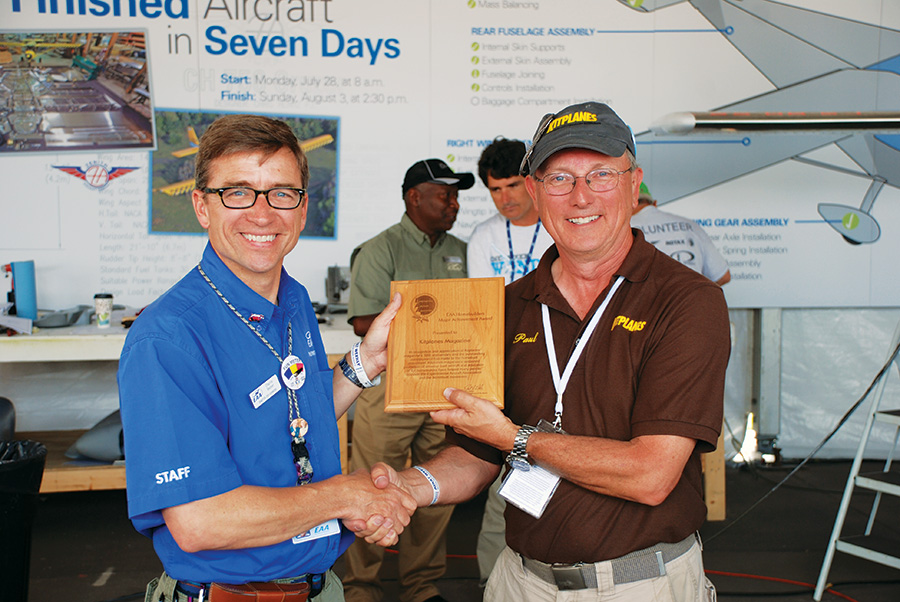Homebuilders have been flying with diesel engines now for a number of years. Sourced from various worldwide vendors, the motors have been the purview of hardcore experimenters, similar to those pushing the envelope of auto engine conversions of the gasoline variety. At least one RV-9 has gone head to head with a factory version in comparison testing, and as expected, there are pros and cons in both directions. The “winner” in such a competition invariably depends upon the requirements (or desires) of the individual aircraft builder/owner. Each owner has to decide what is most important to them. Variables include weight, climb, and speed performance, efficiency, and the ability to use various fuels. No two owners ever fully agree on what is most important—and some find that the equations tip in the direction of a compression ignited engine.
The age of purpose-built aircraft diesels arrived a number of years ago with the Thielert-equipped Diamond TwinStar. As is typical of all aviation advancements, early models had problems, there were company bankruptcies involved, and those on the periphery of the story (which is most people involved in aviation) never really got all of the facts. Until now, purpose-built aviation diesels have been out of reach to the average homebuilder, mostly by choice of the engine companies who chose to concentrate on the certified market as a way to introduce their products while keeping complete control over the program. The few homebuilders who have gone diesel have been on their own—until now.
The recent first flight of the Glasair Diesel Sportsman (see this month’s flight review) is indeed an important step in the development of homebuilding. First promised to journalists at 2013 Sun ‘n Fun, the aircraft sported a DeltaHawk engine, but had not yet flown when it appeared at the show. Little was heard for the next year, but the airplane again was promised at Sun ‘n Fun 2014—and this time, it appeared with a brand new Continental Centurion on the pointy end. Again, it had not yet flown, but it was said to be very close to first engine run and taxi testing. We were delighted, therefore, to hear of its successful first flight just a couple of months later, and even happier to be invited to fly the airplane in June. We applaud the success of the Glasair program because innovation and success helps the industry as a whole—and technology advancements have a way of re-invigorating us all.
As you will read in our review, the engine isn’t exactly new. Continental has acquired the design from the former Thielert organization—this not being the engine that was known for having head problems on the early TwinStars, but a later version that has seen good overall performance, built on the lessons of the first. When we flew the airplane at Glasair’s Arlington, Washington facility, we were impressed by the maturity of the engine design and the cleanliness of the accessories and harnesses. This was not a slapped-together prototype—this was a finished product that looks ready to go. It is clear that Continental has been deeply involved in helping to make this a solid installation.
The real question, of course, is not if the diesel will fly, or if it will run well—it does fine on both counts. The question is the same one we have been asking for years: Will a diesel engine sell in the marketplace? Considerably more expensive and producing less horsepower per pound of installed weight, is there a reason that builders and pilots will find the “cons” acceptable? We think that the answer is going to be yes—in some circumstances. While it might not make sense to the majority of traditional American homebuilders, there are some that will adopt it in the heartland, and many more overseas operators that will be taking a close look. Even performance is not what it seems—the impacts might not be as big as you think.
While the engine installed in the Diesel Sportsman is rated at 155 hp, replacing a 195-hp gasoline engine, the diesel is turbocharged, producing its rated horsepower all the way to 9000 feet. At this altitude, the traditional Lycoming is only doing (at best) 75% of its total rated power—bringing the diesel and the gas engines together in overall performance. If your need for power is at sea level, then the gas engine might be for you. If you want speed and economy at altitude, take a look at the diesel. It will cost a lot more, and you will likely never pay for it in fuel saved, but economics aren’t the only factor when choosing an engine.
The real benefit to the diesel option, in my mind, will be in parts of the world where avgas simply isn’t an option. Despite what we in America would like to believe, the world does not run on 100LL—it runs on Jet A. The Centurion loves Jet A, and even with a high acquisition cost, if that is all you have, then the diesel option looks pretty attractive. The Sportsman is a rugged, off-airport airplane, well suited to operating in the wild. While it probably won’t win the STOL competitions in Valdez, it can carry a great deal in and out of the many wild parts of the planet where aviation is a lifeline to the modern world. Whether for humanitarian or missionary use, such an airplane that can burn the indigenous form of petroleum might be just what the doctor ordered. In many parts of the world, homebuilt aircraft are easy to build and license—free of the 51% limitation for Amateur-Built Experimentals that exists in the U.S. This might be the airplane that sparks a revolution in airplane production in many parts of the globe.
As we in the U.S. learned long ago, aviation is a tremendous asset in economic and technical development. It is no secret that both Continental and Glasair are owned by Chinese interests, and China is a country that is making a great deal of noise about developing their general aviation infrastructure. Starting a general aviation culture from scratch, might it not be to their advantage to bypass the whole avgas model and go directly to Jet A as a common fuel for all of their flying machines? If this is the case, we can postulate that the Diesel Sportsman’s future could be very bright indeed, especially since it is an economic axiom that with increased volume comes decreased costs. There are lots of people in China, and that could bode well for a large production volume—and this could be good for everyone who ever wanted to pull their light plane up to the Jet A pump and say, “Fill it up!”

![]()
Paul Dye retired as a lead flight director for NASA’s Human Space Flight program, with 40 years of aerospace experience on everything from Cubs to the space shuttle. An avid homebuilder, he began flying and working on airplanes as a teen and has experience with a wide range of construction techniques and materials. He currently flies an RV-8 that he built in 2005 and an RV-3 that he recently completed with his pilot wife. A commercially licensed pilot, he has logged over 4500 hours in many different types of aircraft. When not writing on aviation topics, he consults and collaborates in aerospace operations and flight testing projects.





